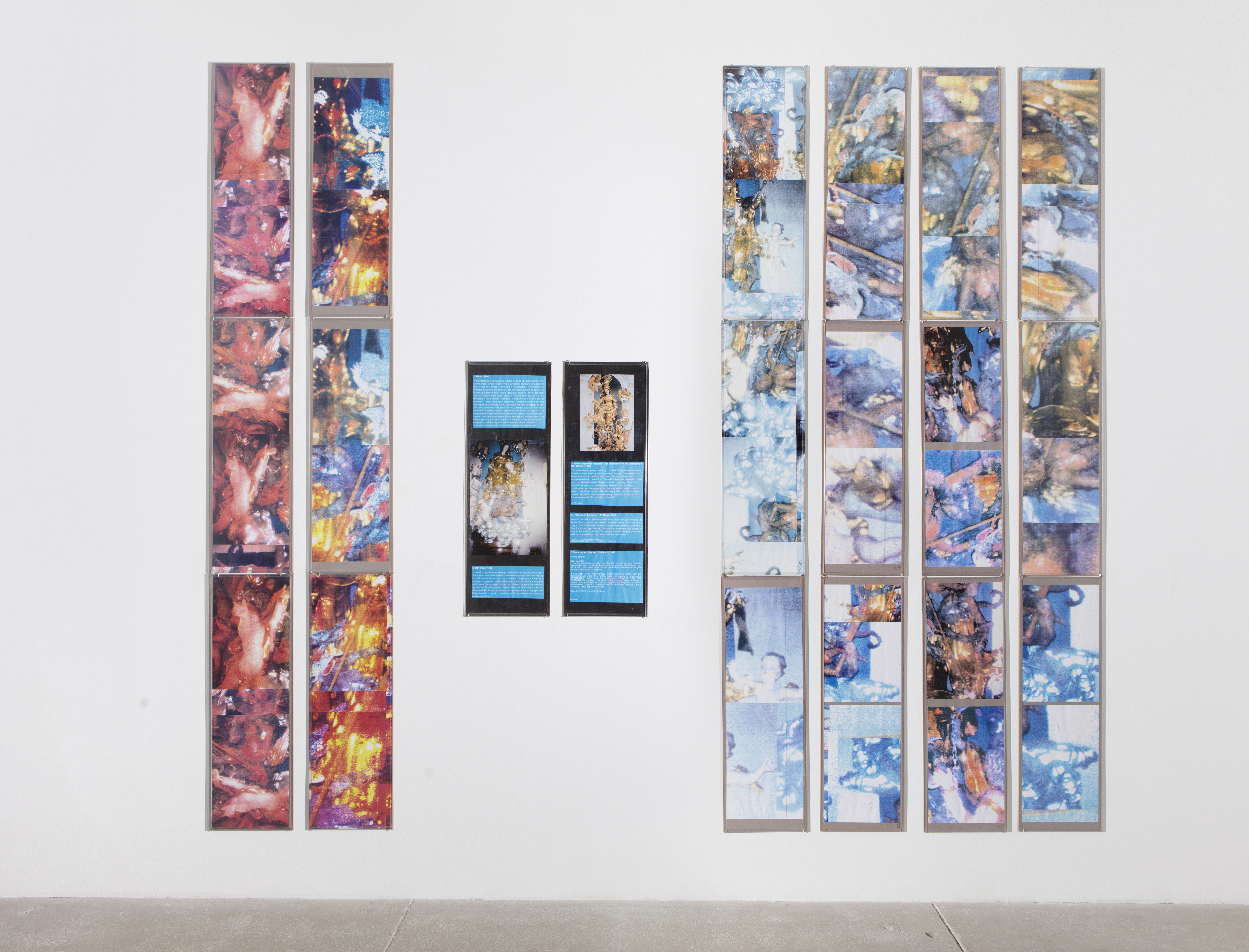
There is a 77-year-old woman living in an 18th-century house on a country back road in New York’s Hudson Valley. She has cats. She’s been fighting health problems.
If you’re tempted to think that you know her story and her trajectory, think again.
She also just won the 2017 Golden Lion for Lifetime Achievement at the Venice Biennale. She has a solo show at MoMA PS1 this fall. Klaus Biesenbach, the director there, calls her “one of the heroines of contemporary art.”
All that, and yet there aren’t a ton of people outside the art world who know who Carolee Schneemann is.
Schneemann is a pioneering painter, performance artist and multi-media maker who is having perhaps her greatest moment of all this year. In her seminal work Meat Joy (1964), she staged a Dionysian nude dance of men and women who rolled about with paint, sausages and fillets of chicken, among other materials. In Interior Scroll (1975), she came out in front of an East Hampton audience, disrobed and struck poses as if she were a life model, and proceeded to pull a scroll out of her vagina.
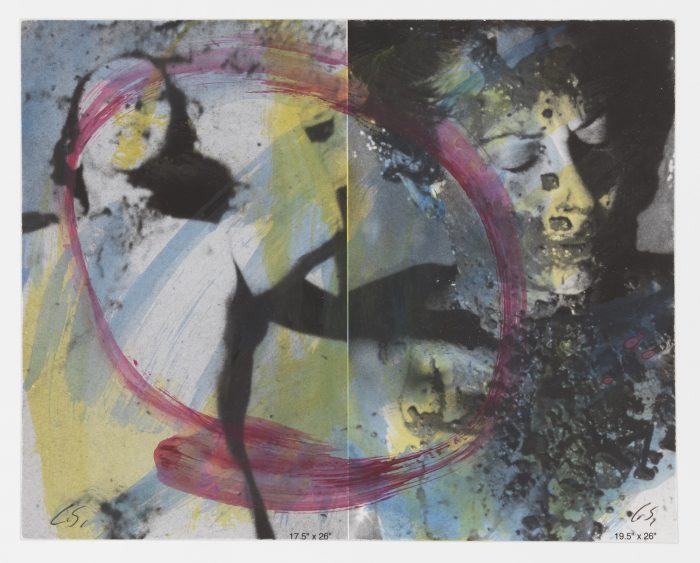
There would be no Marina Abramović without her. Every artist who has tackled feminism, gender and used their own body in art since the early 1960s owes her a debt.
In person, Schneemann is still energetic, defiant and funny. The current tidal wave of recognition is “absolutely amazing,” she says, adding that the recent acquisitions by museums are “thrilling and confirming.”
But she is also plainly resentful that, like many women artists of the 1960s and 70s, she didn’t get recognition when she was doing her seminal work—considering that she was part of the New York demimonde, working with Claes Oldenburg, hanging out with Robert Rauschenberg and Philip Glass, a part of a Downtown era that the art world still uses as a touchstone for creativity.
“Are you kidding?” she says, opening her eyes wide. “It’s been a nightmare balanced by my pure determination and stubborn pride.” Asked when she started making a true living from her work she says, “A few weeks ago… Well, very recently.” She adds, as if speaking to recognition itself: “Where have you been all my life?”
The PS1 show, “Carolee Schneemann: Kinetic Painting,” has as one of the artist’s flagship works Up to and Including Her Limits (1973-6). Suspended nude in a harness, she used a crayon to draw on canvases. One of the original installations will be featured, flanked by video monitors showing some of her various performances of the piece.
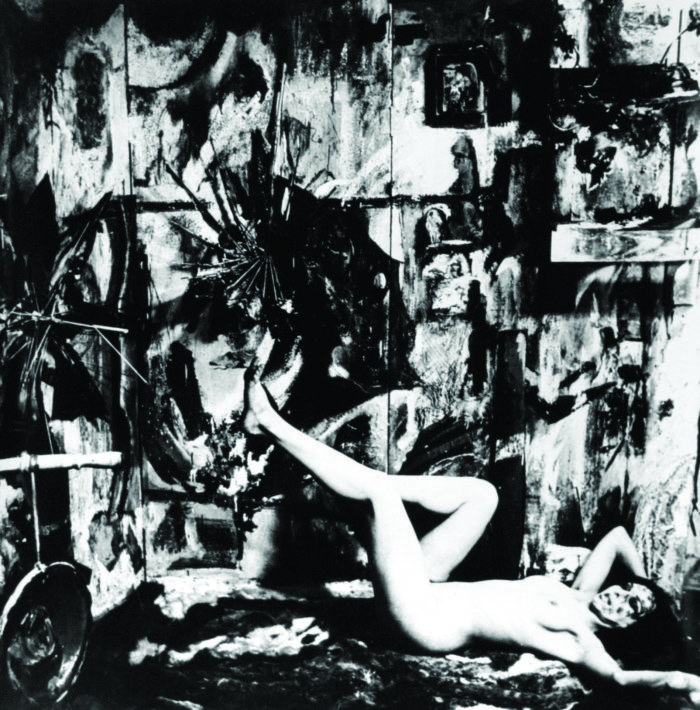
The exhibition title and its conceptual framing around painting is instructive, considering that Schneemann is best known for performance. “I’m a painter, and that’s the essence of being able to construct and create and imagine and enter into the variousness of materials as I see my need for them,” she says. Traditionally painted canvases are included in the show, too.
Early on, Schneemann got a bracing education in double standards. She was raised in Pennsylvania and got a scholarship to Bard College. Her father certainly wouldn’t pay: “No college for a girl.” And no one was happy that she wasn’t interested in typing school. “The family didn’t want an artist,” she says. “That was a useless proposition.” At Bard, she was discouraged from writing about the “trivial” Virginia Woolf.
And she was quietly kicked out of the college, and transferred to Columbia with her scholarship intact, for grounds of “moral turpitude.” Schneemann learned much later about the cause. “I was doing nude self-portraits in my room, because Bard had no models, and these paintings were stolen,” she says. “I think they must’ve been passed around, and they would’ve been considered obscene.”
But the incident got her to New York, and she met the man who would be her partner in crime, love and art, the late composer James Tenney. He would appear, having sex with Schneemann, in her 1964-7 work Fuses. She etched and colored the celluloid stock itself, finding a way to paint, in a way, on film.
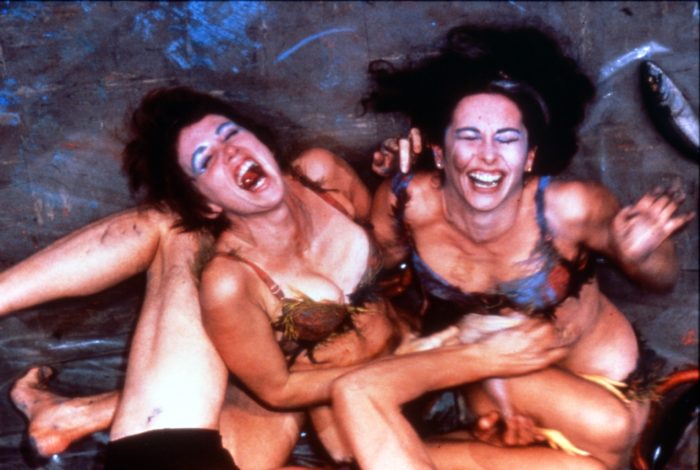
Schneeman was “a pretty girl,” in her words—in fact, she is sure she couldn’t have done any of her early pieces without her looks. “If I wasn’t attractive, I couldn’t have subverted the meanings of the body,” she says. As both “image and image- maker, I was becoming my own material.” And she notes, “I haven’t worked with my body since 1975. It was necessary at a certain moment, but also entrapping.”
Perhaps it’s not surprising that unevolved male dealers and curators wouldn’t get it—Schneemann was making a big conceptual leap at the time. They saw her merely as a “sex object,” she recalls. What was worse, though, was rejection from other women. “The rejection by feminists, that was really painful, really tough,” she says.
But Schneemann also treasures memories of the 1960s New York art scene, as when she participated in The Store, the conceptual brainchild of Oldenburg, and now considered a masterwork. “He’s a profound visionary, it was magic to work there,” she says, though for years she was also doing the oddest of odd jobs on the side, like working as an extra on a porn film set. Ironically, given her own work, she was fully clothed.
She still thinks about the group of “radicalizing young artists who all felt that they were going to change their traditions” at that time, adding that it was “like a lovely swarm, we were all in it together.” She has never been a fan of the “entitlement, expectation, glamour, commercialization” that she sees in some quarters today. Schneemann has never been brand-able.
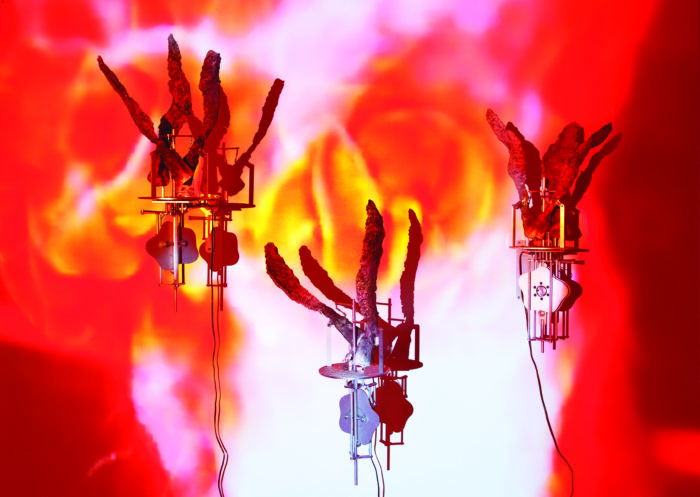
A tough-minded artist from the start, Schneemann has certainly not changed in that regard, either. Though she’s now being honored for her whole body of work, especially the early pieces, she is still making new art. One series tackles the atrocities in Syria; she is taking horrific photographs of piled- up corpses and turning them into a film, having also dealt with the human cost of Vietnam in her work decades ago.
“The people that appreciate my work have already said, ‘We can’t show this,’” says Schneeman of today’s more risk- averse art world. “It’s holding me back.”
Given what we know about this artist, though, it seems unlikely that Schneemann will be held back forever.
She’s living proof that where there’s a girl, there’s a way.










 in your life?
in your life?

